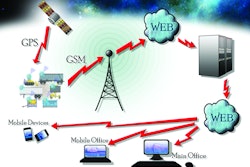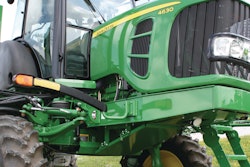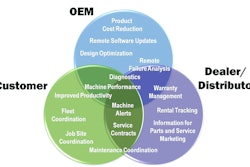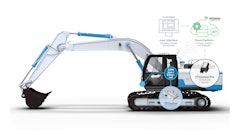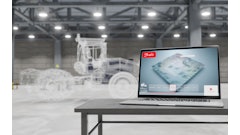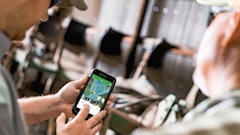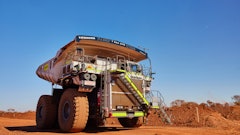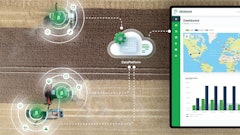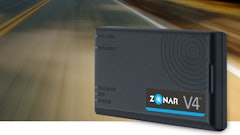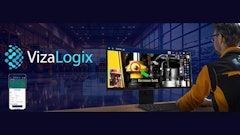
Telematics: linking the future, now
Morey Corp. provides a look at the past and current status of telematics systems.
By Emad S. Isaac
There’s plenty of talk about "telematics", but what does the term really refer to? Do most people truly understand what telematics is – where the term came from – and why telematics technology holds such tremendous promise? Would it surprise people to know that telematics devices already surround us in everyday life, and that even a cellular phone or PDA equipped with GPS is a true telematics device?
For most people, their understanding of what constitutes a telematics device is either fuzzy, very limited (they put them in cars, right?) or a complete blank. But in basic terms, a telematics device is simply a machine that talks to another machine, conveying specific information that the end user needs to know at any given time. Telematics products in their most advanced forms are very sophisticated, multi-functional communications tools that perform valuable services protecting assets by tracking and/or monitoring them from a distance and communicating specific information to that remote recipient.
Not just for cars any longer
The history of telematics begins in the 1980s and the term is possibly European in origin, referring to "telemetry" and "informatics" – joining or connecting telecommunications to onboard computers. Early telematics products were really not much more than data loggers. In simplest terms: I own an asset whose condition I need to monitor. A product connected to that asset collects data from it via various sensors and records that data. When I want that data, I must retrieve it from the data logger and analyze it to obtain the knowledge that I am looking for. The device might be monitoring a large diesel engine, for example – hours run, average temperatures, rpm, oil pressure, etc.
During the 1990s when GPS technology became more available commercially, telematics began to take off, because GPS built into telematics now allowed the owners of fleets of vehicles to track where these mobile assets went, in addition to their operating conditions. Finally, the advent of wireless communications made it possible to access that information remotely and in real time.
Initially, telematics saw widespread use in the car market and for commercial fleets of vehicles. Telematics were installed into vehicles where data was being collected on the vehicles and sent out remotely. Automotive use is the primary application that comes to mind when someone thinks of telematics. The misperception that telematics are simply an automotive tracking device is narrow, and one that companies like Morey Corp. are trying to change. That is why I define telematics as “the potential for collection, aggregation, and storage of pertinent data that can be digested locally, or post-processed remotely.”
Telematics devices, non-tethered and non-wired, when mounted in an asset, can be battery-operated but in most cases use the asset’s power. Telematics can take in the input from multiple sensors, to remotely collect and transmit that data to a secondary site or location. Telematics can communicate anything from the speed of a vehicle, to its position, smog performance, engine status, whether or not its doors are open or closed, and many different things. But telematics can be used in a host of other products that don’t move. Telematics devices can inform a vending machine operator when one or more of his many machines in the field requires servicing; they can also relay alarm information, such as when the battery voltage levels in an unoccupied yacht on a mooring are low.
We say that one of the roles of telematics is asset tracking and monitoring, and this means practically any asset of value from buildings to machinery to construction equipment, dams, towers, oil rigs, etc. There are basically three types of assets that can be served by telematics: fixed, portable, and mobile.
By fixed we mean buildings, oil drilling platforms -- anything whose geographical position is fixed. Telematics may monitor the temperature in a building, air quality, safety and fire suppression systems, anything of that nature.
Portable assets are those that can be moved, but don’t usually. These can be large diesel –powered generators, mobile command centers, things that can be moved but which are normally not in transit.
Mobile, of course, includes trains, planes, automobiles, rental equipment, delivery trucks, cranes, even people and pets; for example, devices that keep track of hospital patients, medical equipment, ankle bracelets worn by persons sentenced to home confinement.
No "one size fits all" for telematics
A key point here is that there is no ‘one size fits all’ practicality with telematics; the industry and applications determine the capability and level of sophistication of the product. For example, there are many types of trucks – but the telematics product suitable for tracking a pizza delivery truck is not the same one needed by a large earthmover.
Also, the value of the asset and its use dictate the level of sophistication of the telematics device needed; how many inputs for sensors, operating conditions and environment, etc., all depends on what the human at the end of the information chain needs to know. With shipping containers, for example, the selection of the telematics unit may be value-driven; a shipping crate filled with consumable paper products versus one packed with high-end consumer electronics products such as wide flat-panel TVs. In the latter case, such conditions as vibration, temperature, humidity levels, location, and integrity of the seal are some of the many parameters that might be monitored.
As one adds productivity and functionality to the telematics unit, cost per unit rises proportionately. But this relates directly to the value of the asset being monitored, tracked and traced, and so forth, but the increase in cost is offset by the job being performed by the unit, which in protecting or monitoring valuable assets is supporting higher productivity and this profitability.
Enablers vs. features
In the early days of simple dataloggers, the margins for the OEM manufacturing the device were larger. OEMs made money based on the value of the device sold, not so much the performance over time. As telematics products moved from non-network to network, performance increased in a dramatic curve. After all, as the asset owner, I no longer had to send someone out to the oil rig to collect the data, it was now sending it to me. Performance went up, but the margin for the OEM dropped dramatically. Margin shifted to the provider of services, the ASP (Applications Services Provider). In the informational flow from telematics device to human, the ASP, the entity positioned between the telematics device and the asset owner has become extremely important.
Both OEM and ASP have different foci, yet they work together in symphonic seamlessness. OEMs are concerned with selling the product, whereas the ASP is concerned with transmitting the information to the asset owner or fleet operator, whose primary concern is in running his fleet and keeping track of assets. Someone has to pay for the air time, data tracking on the web site, and other similar services, which puts the ASP on a recurring dollars model. Whereas the OEM is focused on his product data, improvements in his product, and product differentiation, the ASP is focused on deployment and data management, thus allowing the fleet operator to focus on his productivity.
In defining the telematics value curve, then, it’s important to separate features from enabling technology, because they aren’t the same. Since as we said earlier, one size does not fit all, and one product does not fit all applications, it’s important to define what we need – what features, and what enabling technology supports them. For example, GPS is not a feature – it is an enabling technology, allowing me to track my position – that’s a feature. When I cross a geographic border, for example, being informed of this is a feature, but I need the GPS to enable that feature.
Similarly, a wireless modem is an enabler, and transmitting the information over the air is a feature. Hardware components generally are classified as enablers; this, in selecting the right telematics product for my use, I choose the device based on my application and its needs.
Emad S. Isaac is chief technology officer for The Morey Corp., Woodridge, IL.




